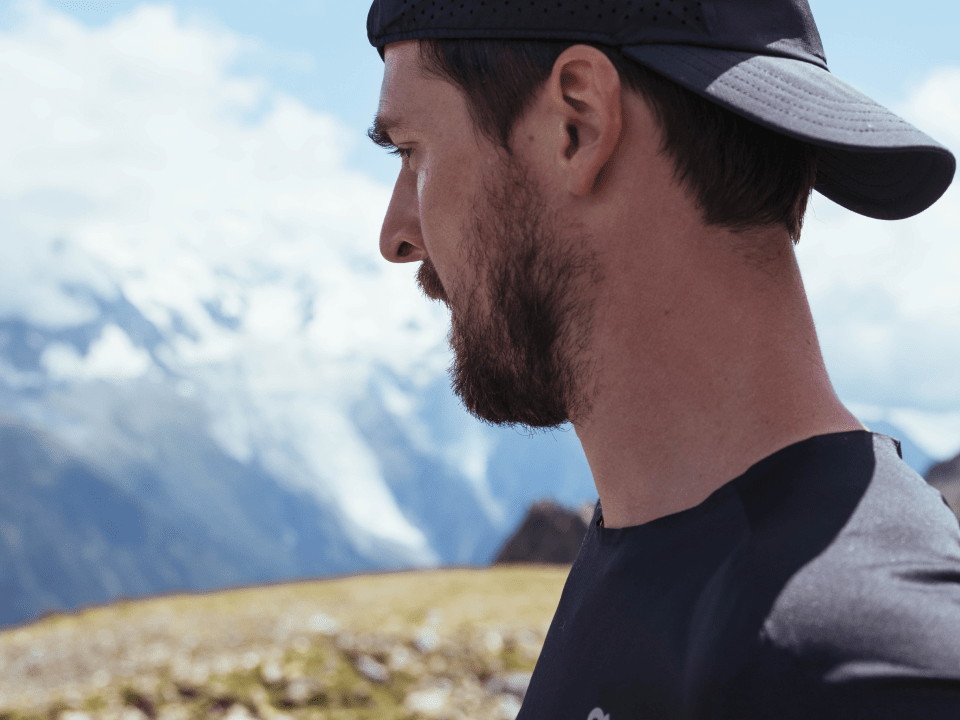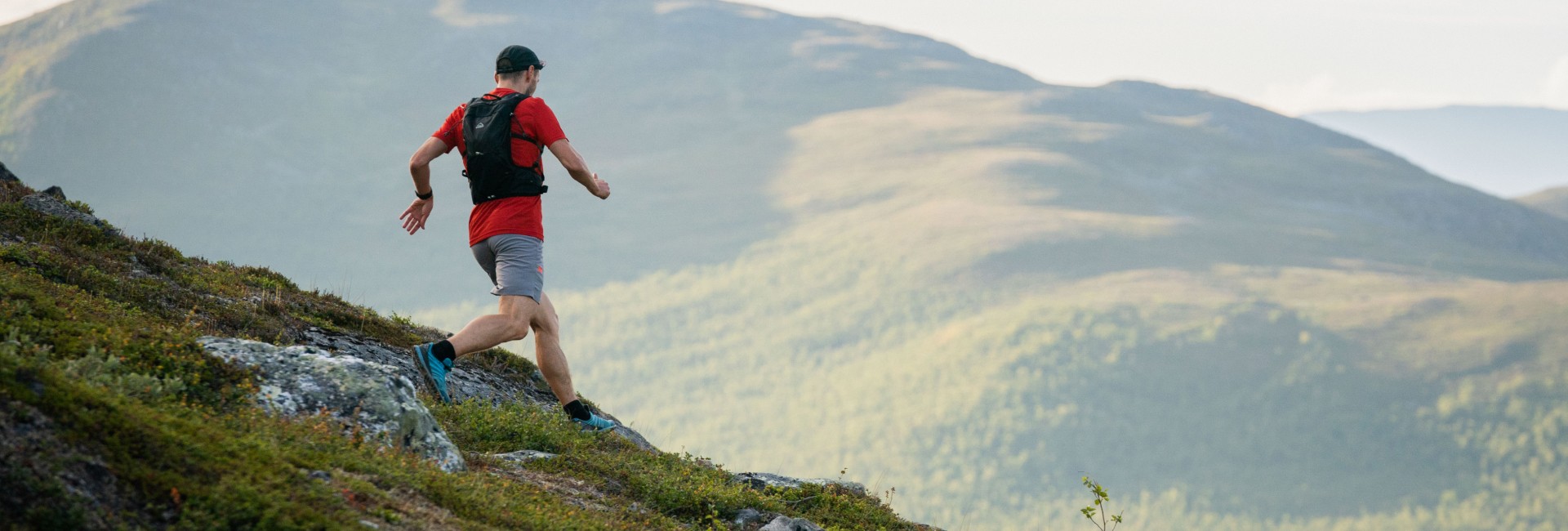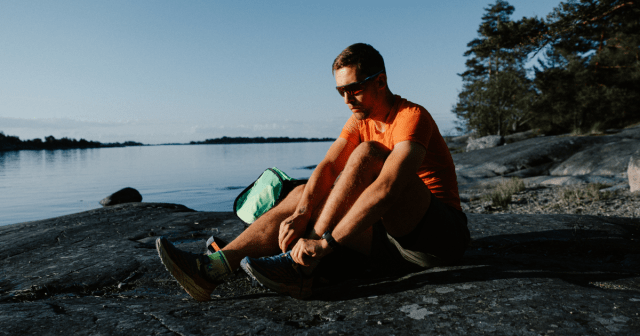What are your limits? When ultra-runner Karel Sabbe stood at the starting line of the Barkley Marathons earlier this year, he was prepared to confront this question head-on. He understood that he was about to test the boundaries of his physical and mental endurance. Over the next three days, deep in a forest east of Knoxville, Tennessee, he was going to experience extreme fatigue and exhaustion, sleep depravation and hallucinations, muscle damage, enormous blisters, and aching ligaments.
This being his third participation, Sabbe was well aware of what awaited him. Firmly convinced that he would not find the will to train for it again, this year was his last chance to complete the legendary race. He had unfinished business and nothing else that finishing this race would satisfy him.
Many consider the Barkley Marathons to be the most brutal, toughest foot race in the world. Runners must complete five loops of the 20+ mile, off-trail course for a total of 100 miles with 63,000 feet of accumulated vertical climb. Day and night, without the help of GPS trackers, phones or course markings, they must run non-stop to complete the race inside the 60-hour cutoff. In nearly four decades, less than 20 men have completed the full, five-loop race. The dropout rate is 99%. It’s a race set up for failure.
For Karel Sabbe, a man who can run the 1,646 miles of Via Alpina in the Alps faster than anyone, the Barkley is a unique opportunity to explore the limits of his body and mind. “I’m not very interested in competing against others or winning races,” he admits. “For me, ultra running is about the personal challenges, about exploring my physical and mental limits. When I’m out there, chasing a faster know times, I don’t look at what others have done. Instead, I ask myself, ‘what am I capable of today?’ And, what am I capable of doing tomorrow? I push myself to find out the answer to these question, to find out my own limits.“

Over the course of his career, Karel Sabbe, a 34 year old dentist from Belgium, has proved to be one of the best ultra runners in the world. He’s set speed records and fastest known times on the Via Alpina, the Appalachian Trail (completing the 2,189-mile trail in less than 42 days), the Pacific Crest Trail, and Big’s Backyard Ultra (running 4.1 mile loops for 75 hours). When he’s out there running, he’s gone for days. Running 60 miles every day for weeks is the norm. So far, every challenge he’s taken has been an extraordinary achievement and accomplishment. Except the Barkley Marathons. Did he find his limits there?
***
Resting in a tent, waiting for the Barkley to commence, Karel savored the final moments of respite, trying to conserve every ounce of energy. He knew that steep inclines and unforgiving terrain lied ahead.
His training cycle leading up to this year’s Barkley Marathons involved crucial adjustments. Recognizing downhill running as one of his weaknesses, Karel devoted himself to getting strong and improving in this area. As he resides in his home country of Belgium, substantial hills where to run downhill for a long period of time aren’t exactly near. There was only one thing he could; he embarked on a training camp in Gran Canaria, Spain. Free from the need to juggle work and training, he fully immersed himself in rigorous training. Over the course of a week, he was able to replicate the challenging terrain he would encounter in Tennessee weeks later, training on the thills for nearly ten hours every day. After training, he read race reports and studied the maps, trying to anticipate every decision he would need to take during the race.
The Barkley Marathons is a race unlike any other. The route and its intricate specifics are kept top secret, and even the entry procedure remains obscure and mysterious. To secure a spot among the 40 selected runners, participants must email the race director and mastermind, Gary “Lazarus Lake” Cantrell, on a designated day, providing an essay outlining the reasons why they should be chosen.
The race can start anytime between midnight and noon, so participants wait at the camp for Laz’s signal, resting, eating, trying to study the maps one more time, and most importantly, trying to stay calm. One hour before the start Laz blows a conch: it’s time to get ready.
This time, Laz opted for a late start, granting Karel the luxury of an extra long night’s sleep. At 8:54am Laz blew the conch at 8:54 am and sixty minutes he sent the competitors on their way by symbolically lighting his cigarette.
And so, they ran.

***
Becoming an ultra runner superstar wasn’t Karel Sabbe’s plan. Before smashing trail running records, he worked hard to complete dental college. That was his calling. At university, while friends partied and enjoyed student life, he pored over books and tenaciously studied. Exhausted and frustrated, he planned an escape.
Becoming an ultra runner superstar wasn’t Karel Sabbe’s plan. Before smashing trail running records, he worked hard to complete dental college. That was his calling. At university, while friends partied and enjoyed student life, he pored over books and tenaciously studied. Exhausted and frustrated, he planned an escape.
Right after university, Sabbe traveled to New Zealand. Alone and without a phone to connect with anyone, he immersed himself in nature and embraced solitude. For weeks, he lived in an isolated cabin, eating simple foods, reading old books, and running until positive thoughts returned. He realized he didn’t want to be the loner in the woods. It was time to go back home.
***
No journey is worth taking without a few bumps in the road. On his way to Tennessee’s Frozen Head State Park, where the Barkley is held annually, Sabbe fell ill. After many months of hard training, his immune system was weakened . “Nobody arrives to the Barkley feeling 100%,” he explains. “The training before the race is so tough that it’s easy to get sick or have a small injury. The only thing I could do was to stay calm and minimized the impact of the illness”.
Waiting for the Barkley Marathons to start, Karel is well-rested after sleeping over 12 hours the night before. It’s an extremely cold Tuesday in March; flakes of snow have been falling on and off all night. Chilled to the bone and fearing freezing conditions, Karel decided to put on a few extra layers of clothes.
“That was a problem. I was wearing too much so soon I started to feel dehydrated. I was sweating too much. My running vest was too small so I couldn’t pack my clothes aways and, of course, you’re not allowed to just leave them on the trail. I had to keep wearing them and by the end of the first loop, I was soaked in sweat. Fortunately, during the next loop, at night, I could recover and started drinking more and had salts and electrolytes.”
As expected, the race was again unforgiving. After the second loop, only 14 participants remained in the competition. Seconds after completing the loop, Karel plopped down on a camping chair, barely moving to take off their socks and shoes and reached for fresh ones. He’s been running in the woods for over 20 hours. Forty more to go. He looked around, put his feet in water, and breathed.
With participants out there running for hours and hours, one might think that running the Barkley is a solo effort, but that’s far from truth. Participants might be out in the forest running for eight to twelve hours running without support. However, between loops, they have the opportunity to be with their crew, who provides a tremendous help. For a man who once sought solace in solitude, during these breaks, Karel must blindly rely on others.
The person who Karel trusted most waited at the camp. Joren Biebuyck, his longtime aide and brother-in-law, was there. From the Pacific Crest Trail to the Alps to Barkley, Joren was there, helping with the maps, preparing the backpacks, and offering the right words of encouragement. He and Karel share such a remarkably close relationship. “I probably couldn’t do this with anybody else,” admits Karel. “He’s been with me in every adventure and knows my strengths and weaknesses so well..”
This exceptionally tight bond helps Karel Sabbe break barriers. While others might have doubts and consider quitting, Joren understands Karel’s ability to persevere and push forward. ‘If my knee is hurting, he can say, ‘Of course, Karel, your knee is hurting. You’ve just completed three loops at Barkley. But now, you have to get out there again and keep going. Otherwise, you’ll regret it forever.’ Joren can say that because he knows what I am capable of.'”
Five minutes into the third loop, Karel tumbled into a frozen river. It was cold and wet after that, he laughs now. Any minor mishap could potentially remove Karel from the race.
Five minutes into the third loop, Karel tumbled into a frozen river. It was cold and wet after that, he laughs now. Any minor mishap could potentially remove Karel from the race. It happened before. After being dropped out in the fourth loop on his first participation at the Barkley, in 2022, Karel again attempted a fourth loop, but become disoriented and started having hallucinations. He wandered off the course and got lost until local policed returned him to the camp.
Dealing with the disappointment of failing twice at the Barkley wasn’t easy. “I was very hard on myself, so I took nearly six months off. Almost a year later, I was still disappointed on the bad decisions I had taken. It was hard to get over this disappointment because I usually succeed in every challenge I take. But after all, I think that failing at Barkley twice made me stronger, more resilient. Disappointment is necessary to make you want to train harder, spend more time studying the maps, and prepare better ”.
***

The exact route of the Barkley Marathons changes slightly every year. Laz aims to design a course that is just so close to impossibility. If someone finishes the race, the following year the course might just get harder.
Navigation is crucial: 80% of the race is off-trail, unmarked. If that would not be enough challenge, runners must locate a series of hidden books along the course and rip out a page (corresponding to the runner’s bib number) to prove the’ve done the full loop. In what seems like a cruel Easter egg, Laz carefully chooses the books and pages, so they include phrases and messages such as “bad luck and trouble”, “abandon hope”, or “last will and testament.” Everything is set up for runners to fail.
Now, for the first time in three participations, Karel was on the fifth loop. He needed to run a fast final loop in order to finish within the 60-hour cutoff. After two full days of running non-stop, he had just a bit less than 14 hours to go.
Fatigue and sleep depravation started to compromise Karel’s judgment. The book pages that he had carefully folded and packed during the first loop were now paper balls in his backpack. Over forty hours into the race, Karel saw his focus slip away. “At that point, it becomes nearly impossible to think clearly and make good decisions,” explains Karel. “I knew that would happen, so I tried to take all those key decisions in advance. If this happens, I’ll do this or I’ll do that. Otherwise, I would have likely thought that this race is impossible and quit.”
On this occasion, the most important decision this time was to never give up. Karel was determined to keep going even in the event of being hugely behind the schedule. “I’ll continue and I’ll go until I’m not allowed to continue,” he told himself weeks before the race.

As loop five commenced, Karel was feeling strong. However, he wasn’t confident that he could finish in time. Despite all his preparations, he had made several small mistakes that cost him several minutes every now and then.
As loop five commenced, Karel Sabbe was feeling strong. However, he wasn’t confident that he could finish in time. Despite all his preparations, he had made several small mistakes that cost him several minutes every now and then. Suddenly, he stopped and looked around. Where’s the next book? Having troubles to concentrate he can’t find one of the books. Time passed. “At this moment, I thought that if I couldn’t find the book in the next five minutes, I was out,” he says. He was close. Damn close to the complete the last loop.
Suddenly, there it was. As he ripped the page, he felt his blood pumping, an adrenaline rush. He accelerated and ran.
Six minutes and 27 seconds before the 60-hour cut off time, Karel Sabbe did it. He completed the fifth loop, becoming the 17th finisher of Barkley Marathons since the first run 1986.
Back in Belgium, people were waking up and getting ready for the day. Karel had accomplished a once-in-a-lifetime achievement. “Of course, there were a few tears shed at the end,” he says.
***
Weeks later, back to his dental practice and his family, Karel Sabbe has yet to process what it means to finish the Barkley Marathons. He’s too busy looking ahead to reflect on the past. This summer, he’s going back to the Pacific Crest Trail, a 2,653-mile trail that goes from the Mexico-US border to the Canada-US, crossing forests, mountains, and deserts. His goal is break the fastest know time and be the fastest known time again: the goal is 51 days, 16 hours and 55 minutes.
“I want to set a super strong record that maybe can never be broken. But even more than even more than that, I want to have a great adventure, facing my limits once and understand what that means.”, concludes Karel.
If you liked this post, don’t forget to share so that others can find it, too.
Please note that the information provided in the Polar Blog articles cannot replace individual advice from health professionals. Please consult your physician before starting a new fitness program.


